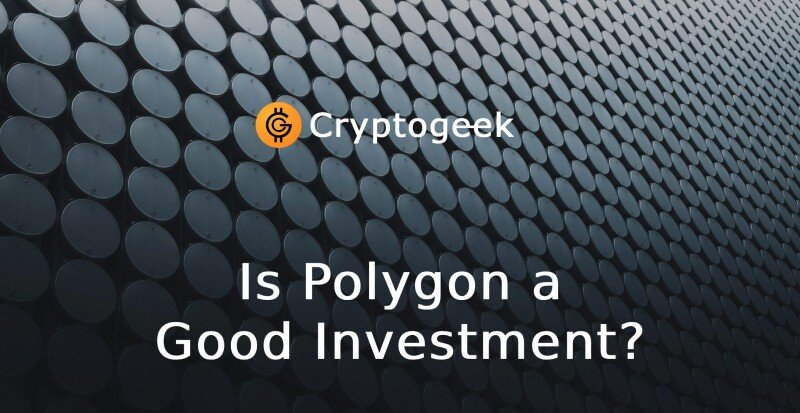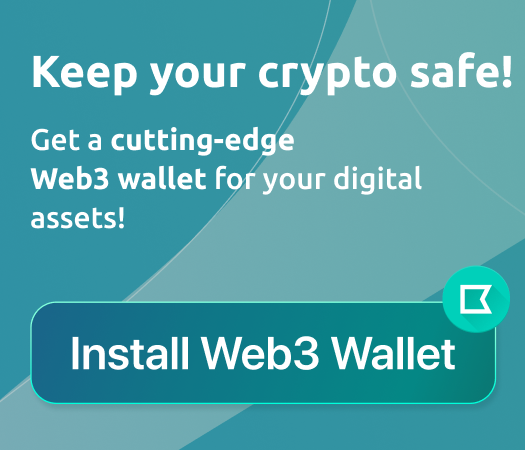Is Polygon a Good Investment?


Is Polygon worth investing in? That's the question in the minds of many investors now as the cryptocurrency sector continues to expand. With its growing ecosystem and real-world practical application, Polygon (MATIC) has been one of the favorites for investors and developers. Before investing in anything, however, it makes sense to know more about what it has to offer, the way it works, and where the risk is. The article below presents the basics to help you decide if Polygon is the right thing to include in your portfolio.
Contents
What is Polygon?
Polygon is one of the blockchain networks created to expedite and save money on using Ethereum. It used to go by the name Matic Network but was rebranded in 2021 to reflect its more extensive mission. Powerful as it is, Ethereum is expensive to use due to the high-priced gas fees it incurs. Polygon is the “Layer 2” solution to scale Ethereum, sacrificing the cost of security.

It’s not some brand-new blockchain seeking to replace Ethereum. Instead, it complements Ethereum to help it process more transactions, more efficiently. The native coin, MATIC, serves to pay for fees and power various applications within the Polygon network.
Brief History and Evolution
Polygon was launched by three Indian software developers in 2017: Jaynti Kanani, Sandeep Nailwal, and Anurag Arjun. The project began life as Matic Network and launched its mainnet in 2020. When the requirement for faster Ethereum transfers grew, Polygon rose to the fore.
It had been appealing to top DeFi (Decentralized Finance) platforms like Aave, Curve, and SushiSwap by 2021. The project had also been backed by top investors like Mark Cuban and reached the all-time high price of nearly $3 for its token, MATIC. It has since been in the top 20 cryptocurrency rankings by market cap.
How Does Polygon Work?
Polygon uses proof-of-stake (PoS) technology. That is, validators are chosen by the amount of tokens they stake, not by the computing power, like the proof-of-work in Bitcoin. The network is therefore able to confirm transactions in the network more quickly and with less usage of energy.
Polygon is also a multi-chain system. It has the capability to support other chains based on Ethereum, enabling developers to come up with customized solutions for various purposes. Just imagine it as one of those highways with multiple lanes, enabling more traffic to flow with less congestion.
Another one of Polygon’s biggest strengths is its compatibility with Ethereum. App developers whose apps were created on the Ethereum network have the ability to migrate them to Polygon easily enough. For this reason, the network is popular for dApps (decentralized apps).
Use Cases and Real-World Applications
It's not just theory. It's being used in real projects today. Large DeFi apps like Quickswap and Aave use Polygon to reduce expenses. NFT platforms like OpenSea also support Polygon, allowing users to buy and sell NFTs at drastically lower fees.
Even established companies are joining the fray. Starbucks, for one, launched its NFT rewards platform on Polygon. The Indian government has used Polygon to certify documents. All these show the real-world usage of Polygon beyond speculation.
Market Behavior and Tokenomics
MATIC is the Polygon network's native coin. It is used to pay for transaction fees, to secure the network by providing staking, and to govern the network.
It has seen high adoption and price growth. Having seen one of its largest rallies in 2021, it corrected in 2022 along with the crypto space in general. Amid the volatility, its consistent evolution and partnerships have kept it in the forefront.

The fixed supply of the MATIC tokens at the moment is 10 billion tokens. This makes it different from inflationary tokens. Not all the tokens in the fixed supply, however, are available in the circulation. The others are gradually released to prevent creating market shocks.
Significant Advantages of Polygon
- Low Fees: Payments on Polygon only incur a fraction of a cent, unlike several dollars on Ethereum.
- Speed: The Polygon network is capable of handling 65,000 transactions per second, many times more than Ethereum.
- Ecosystem: More and more dApps, wallets, exchanges, and platforms now have support for Polygon.
- Security: While operating independently, Polygon relies on Ethereum for added security along with decentralization.
These features make the platform attractive to developers as well as end-users. With greater adoption, Polygon has emerged as the preferred platform for scalable blockchain solutions.
Risks and Limitations
There is no investment devoid of risk, and Polygon isn’t one either.
- Competition: It operates in a highly competitive marketplace. Arbitrum, Optimism, and zkSync are already Layer 2 solutions that seek to fix the same problems with Ethereum. Should some other solution emerge as the winner, Polygon will suffer loss of market shares.
- Dependence on Ethereum: Its success relies on Ethereum's. If Ethereum shifts its scaling model or makes an upgrade in such a way that Layer 2s cease to be important, Polygon will be impacted.
- Regulatory Uncertainty: The regulatory status is in the grey. If the government subjects crypto to stricter rules or considers the MATIC token to be a security, its future development will suffer.
- Evolving Nature: Like all crypto initiatives, Polygon is ever evolving. Bugs, hacks, or even governance errors could erode investor trust.
Analysts' and Industry Perspectives
Polygon has earned acclaim as one of the more thrilling Layer 2 offerings. Research firm Messari has praised its active dev community and strong ecosystem. CoinDesk and CoinTelegraph have consistently featured Polygon’s growth, funding developments, and key integrations.
Polygon in 2022 was selected by Meta (formerly Facebook) in order to power Instagram’s NFT integration. That was marked as an important success, showing trust from the top technology firms.
Vitalik Buterin, the co-founder of Ethereum, has been encouraging of Layer 2 scaling solutions like Polygon. While not directly endorsing the one project, his opinions on scaling have helped contribute to the growth in the credibility of platforms like Polygon.
Should You Invest in Polygon?
This will depend on your goals and risk tolerance. If you're looking for a long-term play with strong partnerships, tangible use cases, and growing developer community, you may be interested in checking out Polygon.
But if you're risk-averse or looking for guaranteed returns, crypto might not be the best fit at all. Diversification and due diligence, as with all assets, come in handy.
For the purpose of staking, the ownership of MATIC enables passive earning in the form of staking rewards. And if you're already occupied in DeFi or NFTs, you may save fees by using Polygon.
Conclusion
Polygon has proven itself by addressing some of the largest problems in Ethereum: slow speeds and high costs. Its real-world practical applications, partnerships, and expanding ecosystem place it in a positive position in the crypto sphere.
Is Polygon worth investing in? For others, yes – at least for those who believe in the bright future of Ethereum and would want to invest in initiatives based on its strengths. Just like with any kind of investment, however, one ought to understand the risks, remain informed, and never risk more than you might lose.
FAQ
What is Polygon used for?
Polygon is one of the solutions that enable Ethereum to process more transactions at reduced costs. Polygon is utilized for DeFi, NFTs, gaming, and business purposes.
Is MATIC the same as Polygon?
Yes, the native token to the Polygon network is the MATIC. It runs the network, pays for transactions, and is utilized in the process of staking.
Can I stake for rewards?
Yes, you can stake MATIC on many different platforms to receive passive income. Exchanges and wallets support the staking of MATIC.
Is Polygon better than Ethereum?
Polygon is not an alternative to Ethereum. It’s a side system, and it makes Ethereum faster and cheaper. They simply collaborate.
What are the risks of investing in Polygon?
Risks involve competition from other Layer 2s, reliance on the future of Ethereum, regulatory unpredictability, and market volatility in general.
Where do I buy Polygon?
You can buy MATIC on the top crypto exchanges like Binance, Coinbase, and Kraken. Trading is available in fiat pairs and cryptocurrency pairs.
Is Polygon environmentally friendly?
Yes. Since it uses proof-of-stake, it consumes dramatically less energy than proof-of-work chains like Bitcoin.
This article has been prepared specifically for posting at https://cryptogeek.info/, to help the readers make more informed decisions in the cryptocurrency market.







Here are no comments yet. Be the first!